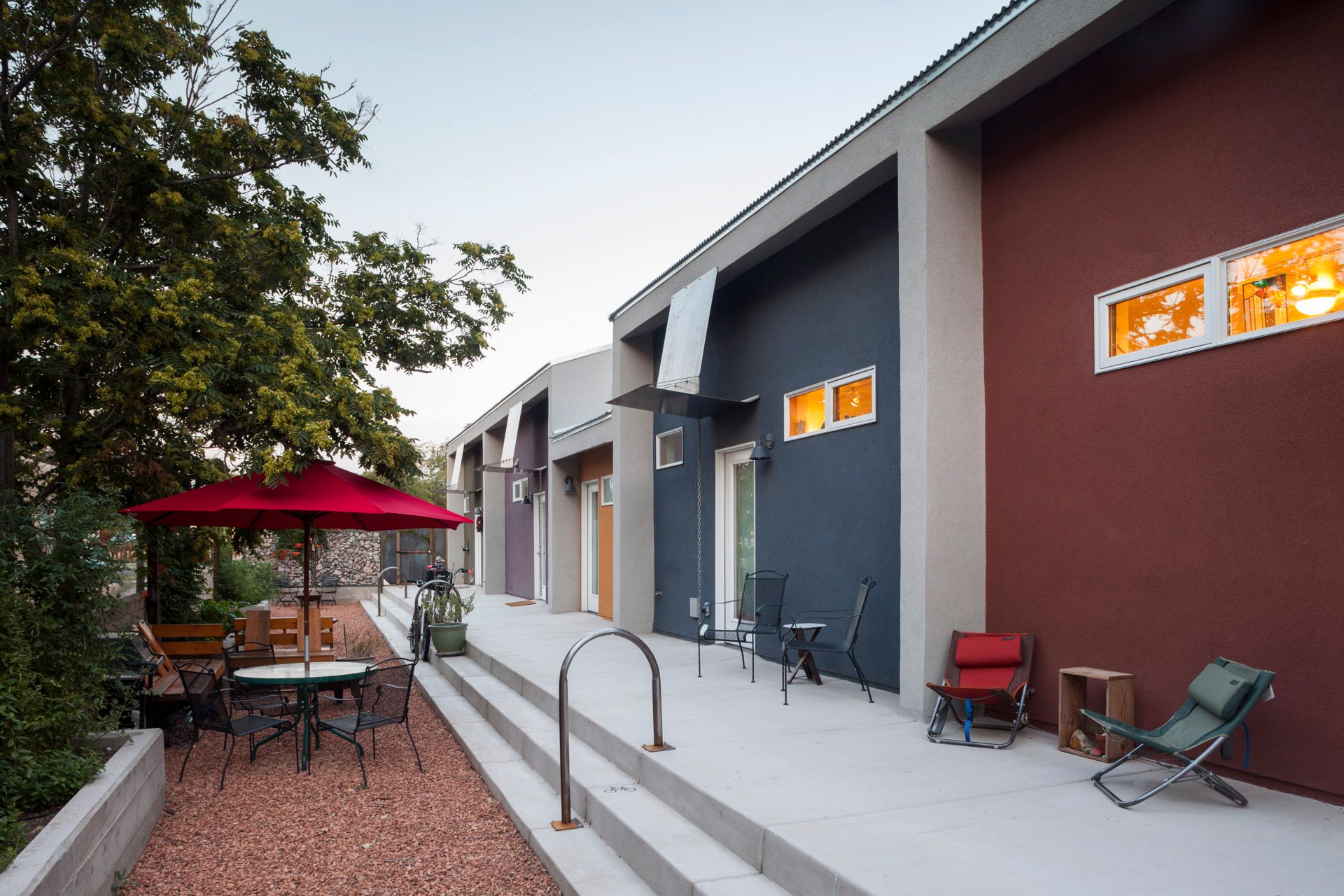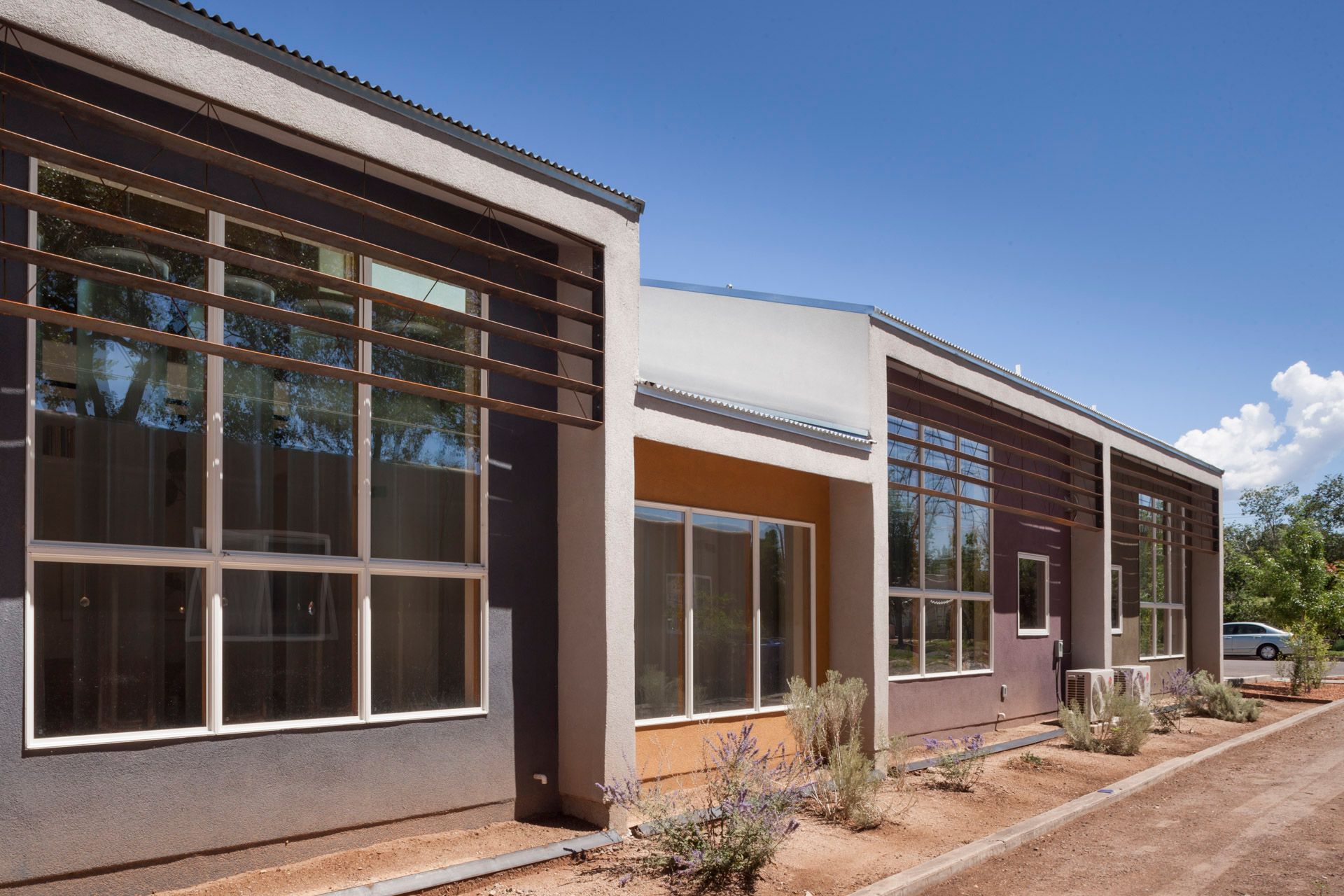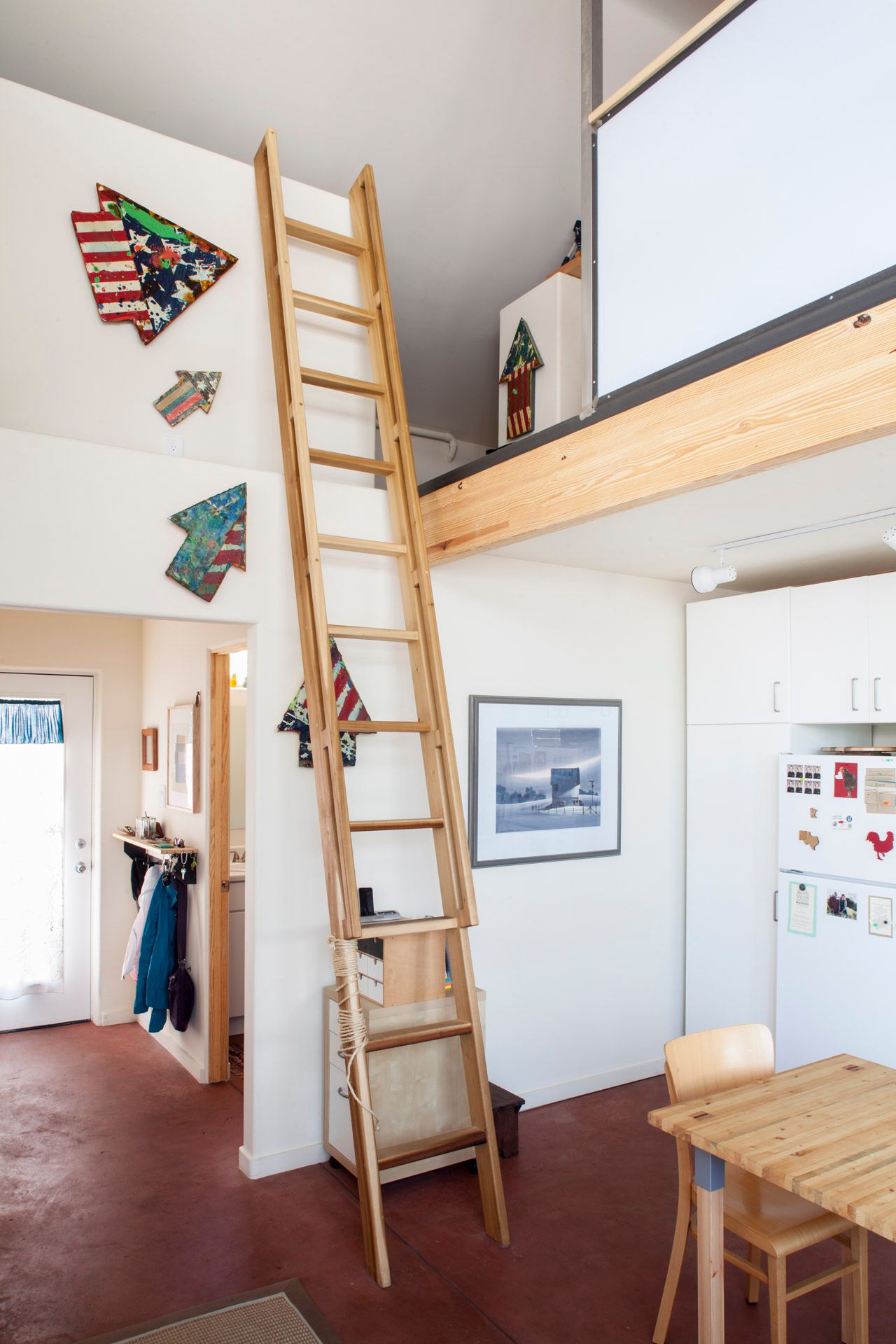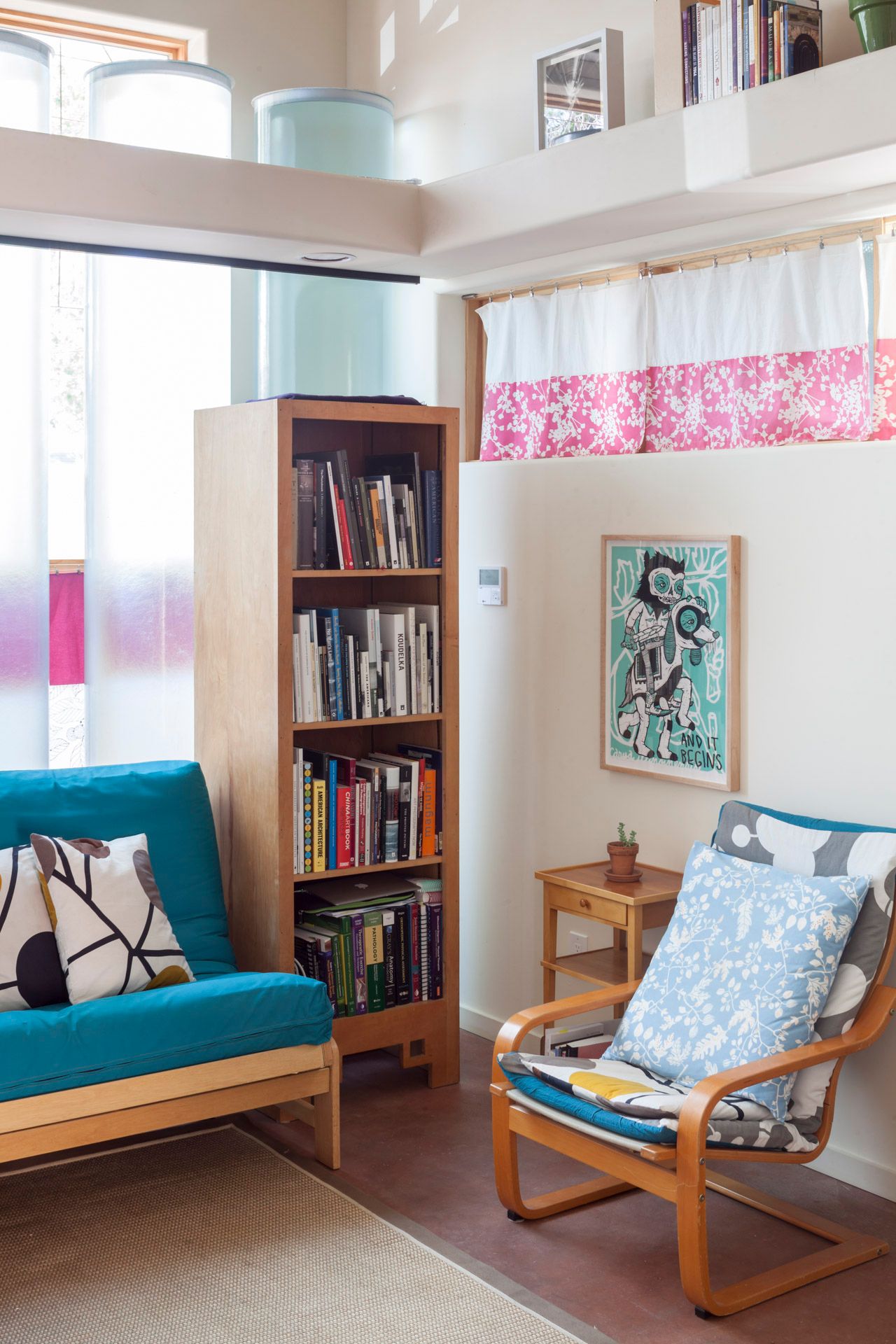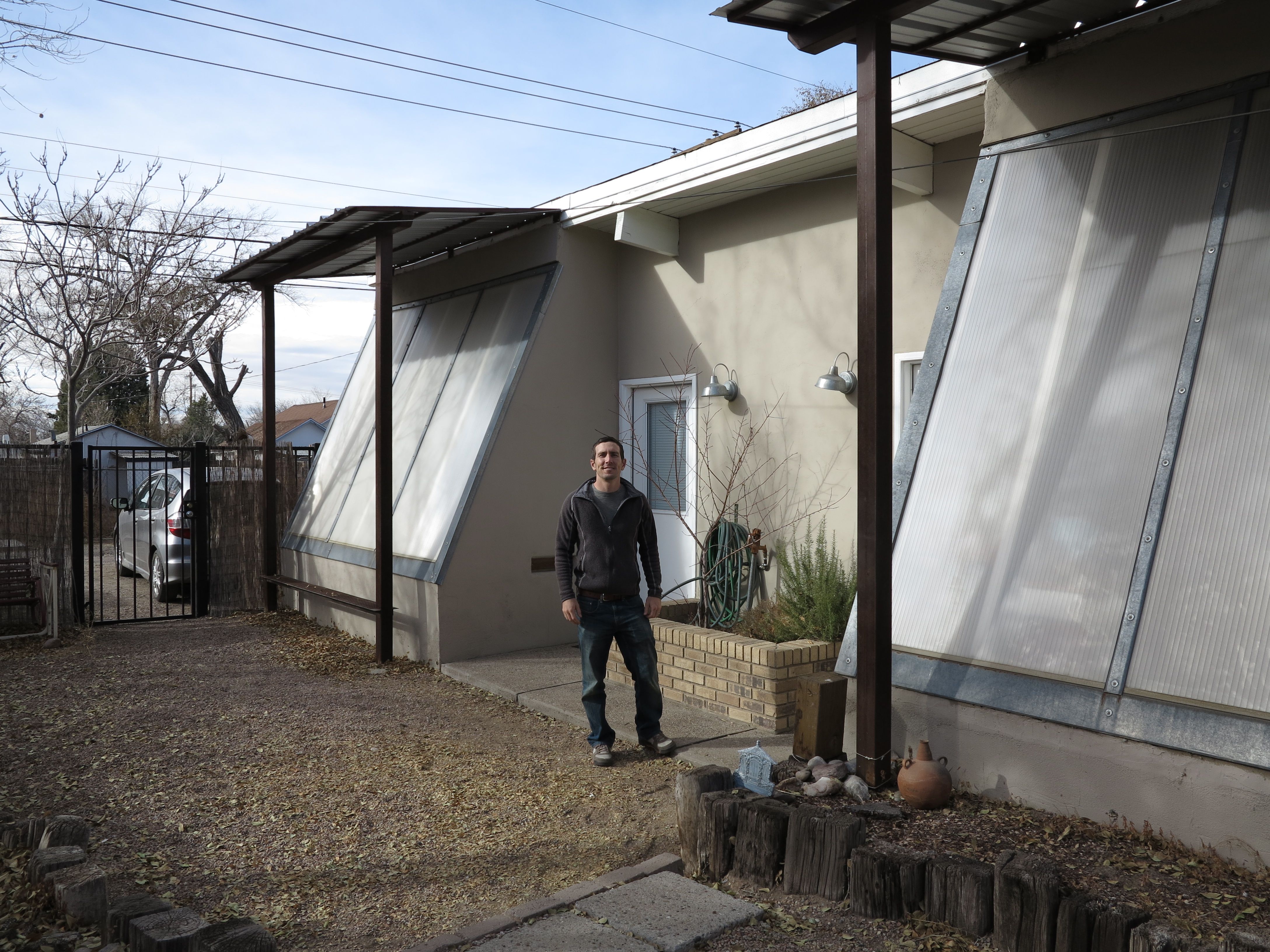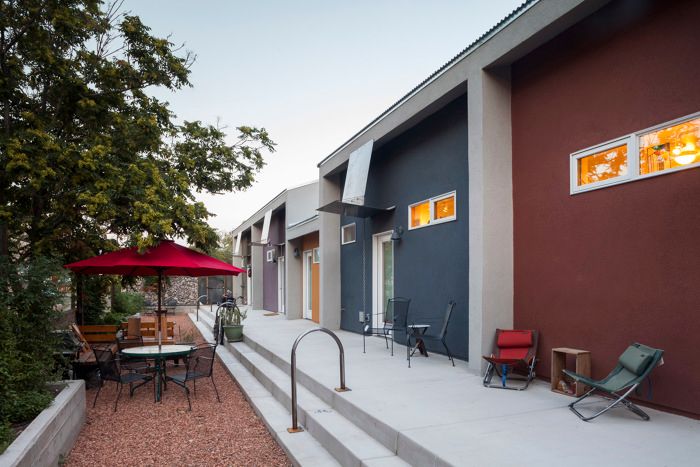
Albuquerque, N.M., was an incubator for alternative building technologies when Jon Davis graduated from the University of New Mexico in the early 1970s and started building passive-solar adobe houses.
Although not an architect, Davis had studied the principles of passive-solar design in school. After graduation, he built superinsulated buildings and eventually started using structural insulated panels (SIPs). His first SIP building was a duplex rental unit just a few blocks from the university campus. “Basically he just wanted to pull out all the stops and make it extremely passive solar and do all these things he was learning about,” his son Evan Davis said recently.
At the time, the two small apartments, each about 500 sq. ft., were a real departure from conventional residential design. Not only were SIPs relatively unknown, but the apartments also featured water-filled translucent tubes for added thermal mass and large sloped windows that gathered energy from the sun.
It was this last detail that turned the apartments into solar ovens. “These places were absolutely unbearable in the summer,” Evan said. His father, like a lot of early passive-solar designers, hadn’t yet mastered the fine points of solar shading, and it was Evan who as an architecture student himself later designed and built a roof overhang on the building to block the summer sun.
After his own graduation, Evan worked with his father at Sunlight Homes, where they settled into a comfortable collaboration. Then, a few years ago, Jon Davis died.
In the aftermath, Evan, now 31, decided to build his mother a four-unit rental to augment her income, and the design he came up with was an updated version of the duplex his father had created nearly 40 years earlier.
Some similarities and some key differences
The 1970s duplex and the building Evan completed at the beginning of this year share a couple of important characteristics. They both have small footprints, high ceilings, sleeping lofts, and the most important feature of them all: the Kalwall tubes.
The 10-ft.-tall tubes are 18 in. dia. and filled with water. Standing in a south-facing window, they moderate temperature spikes with high thermal mass. The tubes are fabricated from a type of fiberglass by Kalwall, a company based in Manchester, N.H. They’re pricey, said Evan, but well worth it.
The tubes have proved remarkably durable, requiring only a good cleaning once every five years or so and a little bleach once in a while to kill off any algae. None of the tubes has failed. Water has a higher mass than the concrete-slab floor or the double layer of 5/8-in. drywall on the building’s party walls, so the tubes provide an essential tempering element in the passive-solar units.
Beyond that, people just seem to like them. “I was really taken at how easily those two units rented, despite them not really being anything special,” Evan said. “They became known as the apartments with the tubes.”
Evan said he now designs buildings all over the United States, and he wishes he had more opportunities to include the Kalwall tubes in the plans. “I so rarely get to use things like these water tubes,” he said. “Most of my clients want more traditional-looking homes, unfortunately.”
Framed walls rather than SIPs
Evan chose to use 2×6 framed walls insulated with wet-blown cellulose rather than SIPs. He added an extra 2 in. of extruded polystyrene insulation (XPS) for a total R-value of 30. The roof is framed with I-joists and insulated with dense-pack fiberglass (R-47). He would have preferred using SIPs, but he chose advanced framing instead because it was less expensive.
On south-facing walls, the roof overhang is only 18 in., which is not nearly enough to shade the windows properly during the summer. To compensate, Evan designed a steel louver that he and his brother built and installed at the top of the wall. It provides the correct amount of summer shading to prevent overheating.
The concrete-slab foundation is insulated with 2 in. of XPS.
The all-electric units are heated and cooled with a 28-SEER single-zone ductless minisplit made by LG. Each unit has an exhaust-only Panasonic fan in the bathroom. Evan said the very small volume of the apartments made him comfortable with an exhaust-only ventilation strategy.
The units are ready for photovoltaic panels, but the timing of their installation depends on the fate of a large elm tree that now shades the western half of the roof, Evan said. The tree, planted in the 1930s, is nearing the end of its expected life span.
Domestic hot water is provided by conventional water heaters located in the lofts. Monthly utility bills are about $55, most of which goes to hot water.
Outlandish becomes the norm
When Jon Davis built the original duplex, the design and materials were both highly unusual. Passive-solar building still hasn’t become mainstream, but all the attention heaped on green building, Passive House construction, and advanced building standards such as LEED certainly have made homebuyers more aware of new possibilities.
“That’s one thing that worries me about my business,” Evan said. “It used to be that we were crazy. What we did was crazy back in the early ’80s and even part of the ’90s. It was very unheard of, and the people who found us were the fringe people, but now it’s becoming more and more common. Slowly, I’m starting to see that what I do is no longer really a niche. Maybe that’s for the better.”
The new four-unit building is creating a buzz in the neighborhood, Evan said, thanks in part to the Kalwall tubes visible in the front windows that intrigue passers-by.
Even his mother and brother are on the bandwagon. Each has taken one of the apartments in the building. “My mom ended up wanting to live in one,” Evan said. “She wasn’t anticipating that. She said, ‘I can’t live in something that small,’ and then she saw it and said, ‘I can totally do this.'”
